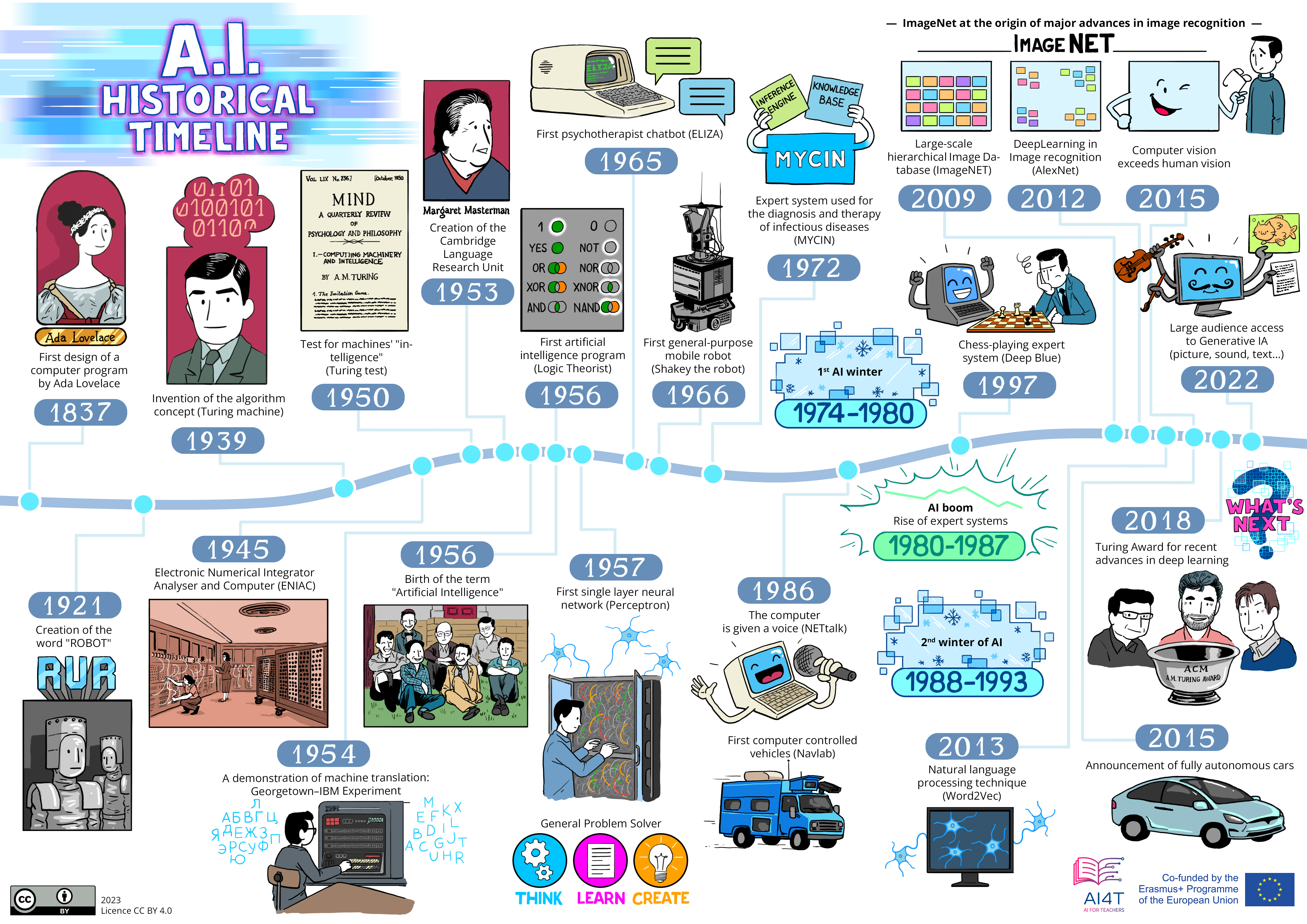Metadata
- Id: EU.AI4T.O1.M2.2.2t
- Title: 2.2.2 A brief history of AI
- Type: text
- Description: Explain where does AI come from
- Subject: Artificial Intelligence for and by Teachers
- Authors:
- AI4T
- Nicolas, Rougier - Inria
- Licence: CC BY 4.0
- Date: 2022-11-15
- Modified : 2023-10-02
A brief history of AI¶
Today, artificial intelligence is present in many of the technologies we use every day in our computers, our mobile phones, our watches, our speakers... It is even present in our search engines and on social networks.
However, AI is an old scientific discipline, it was officially recognised as a field of research in 1956.
The historical timeline presented here highlights the main steps of AI developments from the first concept of a programmable machine by Ada Lovelace in 1837 to the most recent scientific advances in deep learning, applied to image recognition applications for example.
What are the main scientific milestones of AI?
Click on the image below to discover the details of each scientific milestone!

The progress of research in the field of AI will be booming until 1974. Subsequently, as the hoped-for results did not materialise, investors lost interest in the discipline and research in the field began to falter until 1980: this was the first winter of AI. It was the rise in the 1980s of expert systems, which made it possible to reproduce cognitive abilities and to outperform experts in their field, that revived the dynamics of the discipline. But here again, the enthusiasm of funders is waning in the face of slower-than-expected progress, and AI will experience a second winter of about ten year.
In the mid-1990s, AI experienced a new boom, propelled - among other things - by the victory of IBM's Deep Blue programme over the chess champion Garry Kasparov in 1997. New performances, for example in image recognition, are at the origin of the current enthusiasm for the discipline. Current achievements in artificial intelligence, such as the development of voice assistants, medical imaging analysis or intelligent mechanisms in cars, are the result of the research advances of the last twenty years.
In 2022, generative AI (text, sound, image), the theoretical foundations of which date back to the 2010s, are being made available to the general public via dedicated interfaces and are enjoying huge popular success. Since then, they have been used in a wide range of fields (industry, research, education, the arts), but they also raise a number of questions about the consequences of misuse (particularly in the field of teaching and learning) and the role of AI's little hands.